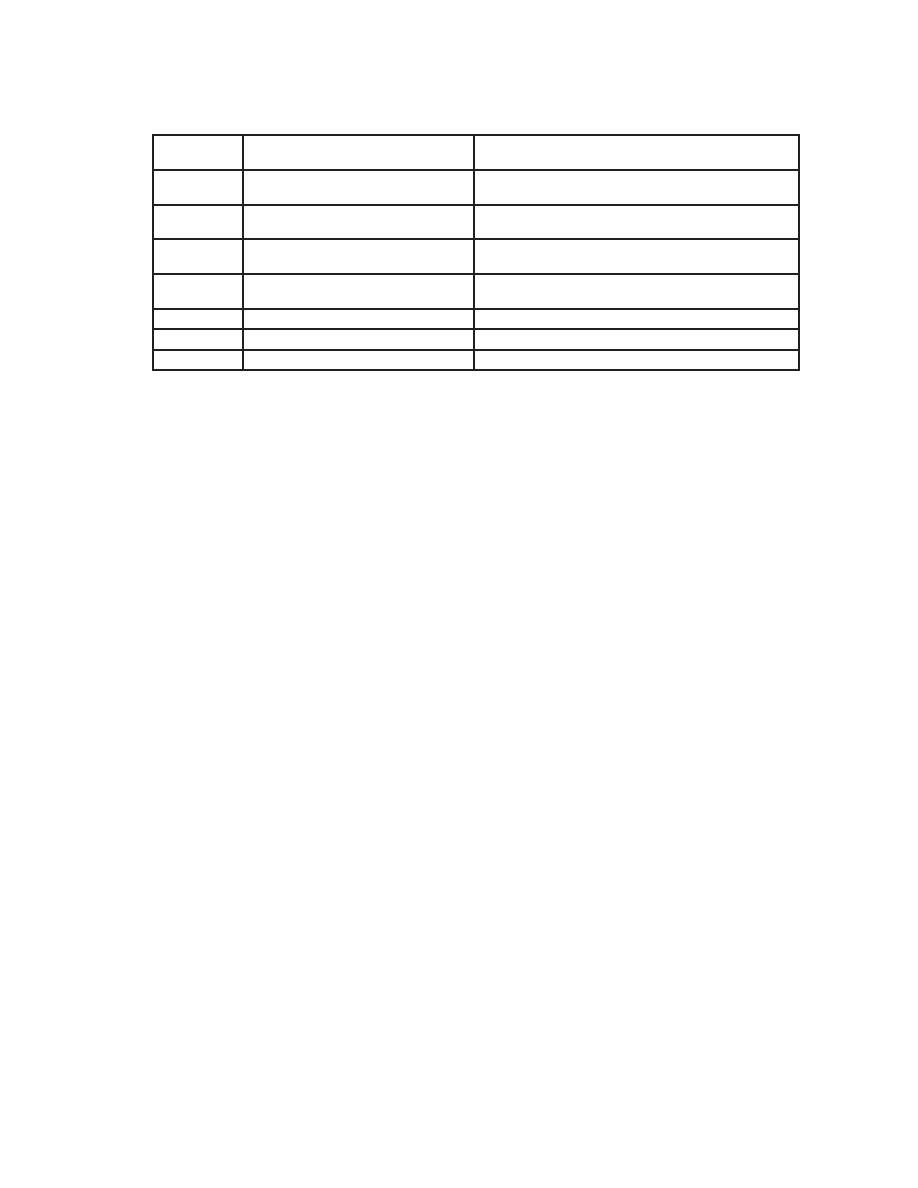- 您現(xiàn)在的位置:買賣IC網 > PDF目錄98158 > TAS3103DBTR (TEXAS INSTRUMENTS INC) SPECIALTY CONSUMER CIRCUIT, PDSO38 PDF資料下載
參數(shù)資料
| 型號: | TAS3103DBTR |
| 廠商: | TEXAS INSTRUMENTS INC |
| 元件分類: | 消費家電 |
| 英文描述: | SPECIALTY CONSUMER CIRCUIT, PDSO38 |
| 封裝: | GREEN, PLASTIC, TSSOP-38 |
| 文件頁數(shù): | 7/148頁 |
| 文件大小: | 1247K |
| 代理商: | TAS3103DBTR |
第1頁第2頁第3頁第4頁第5頁第6頁當前第7頁第8頁第9頁第10頁第11頁第12頁第13頁第14頁第15頁第16頁第17頁第18頁第19頁第20頁第21頁第22頁第23頁第24頁第25頁第26頁第27頁第28頁第29頁第30頁第31頁第32頁第33頁第34頁第35頁第36頁第37頁第38頁第39頁第40頁第41頁第42頁第43頁第44頁第45頁第46頁第47頁第48頁第49頁第50頁第51頁第52頁第53頁第54頁第55頁第56頁第57頁第58頁第59頁第60頁第61頁第62頁第63頁第64頁第65頁第66頁第67頁第68頁第69頁第70頁第71頁第72頁第73頁第74頁第75頁第76頁第77頁第78頁第79頁第80頁第81頁第82頁第83頁第84頁第85頁第86頁第87頁第88頁第89頁第90頁第91頁第92頁第93頁第94頁第95頁第96頁第97頁第98頁第99頁第100頁第101頁第102頁第103頁第104頁第105頁第106頁第107頁第108頁第109頁第110頁第111頁第112頁第113頁第114頁第115頁第116頁第117頁第118頁第119頁第120頁第121頁第122頁第123頁第124頁第125頁第126頁第127頁第128頁第129頁第130頁第131頁第132頁第133頁第134頁第135頁第136頁第137頁第138頁第139頁第140頁第141頁第142頁第143頁第144頁第145頁第146頁第147頁第148頁

345
Table 37. DRC Example 4 Parameters
DRC
PARAMETER
REQUIRED (SPECIFIED) VALUE
(NET GAINSAP Input-DRC = 0 dB)
I2C COEFFICIENT VALUE
T2
22 dBInput ≥ 70 dBDRC
70/6.0206= 11.626748
= 0x000005D0394825.23 Format
T1
102 dBInput ≥ 150 dBDRC
150/6.0206 = 24.91446
= 0x00000C750D0925.23 Format
O2
100 dB
(100 + 24.0824)/6.0206 = 20.609640
= 0x00000A4E08B025.23 Format
O1
0 dB
(0 + 24.0824)/6.0206
= 4.000000
= 0x00000200000025.23 Format
k2
1:1.4 Expansion
1.4 1 = 0.4 = 0X03333335.23 Format
k1
1:1 Transfer
(1/1) 1 = 1 1 = 2 = 0XF0000005.23 Format
k0
1:1.5 Expansion
1.5 1 = 0.5 = 0x04000005.23 Format
3.8
Spectrum Analyzer/VU Meter
The TAS3103 contains an I2C bus programmable function block that can serve as either a spectrum analyzer or a
volume unit (VU) meter. Figure 326 shows the structure of this function block and lists the I2C subaddress of the
parameters that control it.
The block consists of 10 biquad filters, each followed by an rms estimator and a logarithmic converter. Two nodes
provide input to the block, with each node servicing five of the 10 biquad filters. Audio from input node s can either
come exclusively from channel 1, channel 2, channel 3, or from a gain-weighted combination of these channels. Audio
from input node t can also come exclusively from either channel 1, channel 2, or channel 3, or from a gain-weighted
combination of these channels. The spectrum analyzer then can be used to divide the audio frequency band into ten
frequency bins to examine the spectrum of the audio data stream on channel 1, channel 2, channel 3, or any
combination of these channels. The spectrum analyzer can also be used to divide the audio frequency band into five
frequency bins to examine the spectral content of two of the channels independently.
The VU meter is a special case of the spectrum analyzer that uses only the outputs from biquad 5 and biquad 6.
Typically, for the VU meter, one channel would be routed to biquad 5 (node s) and a different channel would be routed
to biquad 6 (node t). Each biquad filter would be assigned a band pass transfer function that encompasses most of
the audio band, or the filter could be configured as a pass-through device to see the full spectral band. The two outputs
then would be a measure of the energy on the two channels. Other options for the VU meter are also available. For
example, by properly setting the coefficients on biquad 5 and biquad 6, the concurrent measurement of bass and
treble volume levels on a single channel could be made.
Mixer and summation elements preceding the two input nodes s and t provide a means of adjusting the spectrum
analyzer and VU meter outputs relative to the incoming audio data stream. The spectrum analyzer and VU meter
outputs are unsigned 5.3 format base 2 logarithmic numbers. The integer part of the number designates the most
significant bit (in the 48-bit digital audio processor DAP word) occupied by the magnitude of the rms estimate of
the biquad filter output. A value of 31 means the magnitude of the rms estimate occupies bit 47 of the 48-bit DAP word
(bit 48 is the sign bit, and using the absolute value of the biquad filter output in determining the rms estimate makes
this bit always 0 in value). A value of 30 means the magnitude of the rms estimate occupies bit 46 and this pattern
continues with a value of 1 signifying the magnitude of the rms estimate occupies bit 17. A value of 0 signifies that
the magnitude of the rms estimate is below bit 17. The fractional digits in the 5.3 formatted number are simply the
three bits below the most significant data bit. If the rms estimate lies below bit 16 of the 48-bit DAP word, the spectrum
analyzer/VU meter output is 0.0. Figure 327 gives examples of logarithmic outputs for different 48-bit rms estimate
values.
相關PDF資料 |
PDF描述 |
|---|---|
| TAS3103IDBTRG4 | SPECIALTY CONSUMER CIRCUIT, PDSO38 |
| TAS3103IDBTR | SPECIALTY CONSUMER CIRCUIT, PDSO38 |
| TAS3103IDCP | SPECIALTY CONSUMER CIRCUIT, PDSO38 |
| TAS3103DBTG4 | SPECIALTY CONSUMER CIRCUIT, PDSO38 |
| TAS3202PAGR | SPECIALTY CONSUMER CIRCUIT, PQFP64 |
相關代理商/技術參數(shù) |
參數(shù)描述 |
|---|---|
| TAS3103DBTRG4 | 功能描述:音頻 DSP Digital Audio Processor RoHS:否 制造商:Texas Instruments 工作電源電壓: 電源電流: 工作溫度范圍: 安裝風格: 封裝 / 箱體: 封裝:Tube |
| TAS3103EVM | 功能描述:音頻 DSP TAS3103 Eval Mod RoHS:否 制造商:Texas Instruments 工作電源電壓: 電源電流: 工作溫度范圍: 安裝風格: 封裝 / 箱體: 封裝:Tube |
| TAS3103IDBT | 功能描述:音頻 DSP Digital Audio Processor RoHS:否 制造商:Texas Instruments 工作電源電壓: 電源電流: 工作溫度范圍: 安裝風格: 封裝 / 箱體: 封裝:Tube |
| TAS3103IDBTR | 功能描述:音頻 DSP Digital Audio Processor RoHS:否 制造商:Texas Instruments 工作電源電壓: 電源電流: 工作溫度范圍: 安裝風格: 封裝 / 箱體: 封裝:Tube |
| TAS3103IDBTRG4 | 功能描述:音頻 DSP Digital Audio Processor RoHS:否 制造商:Texas Instruments 工作電源電壓: 電源電流: 工作溫度范圍: 安裝風格: 封裝 / 箱體: 封裝:Tube |
發(fā)布緊急采購,3分鐘左右您將得到回復。